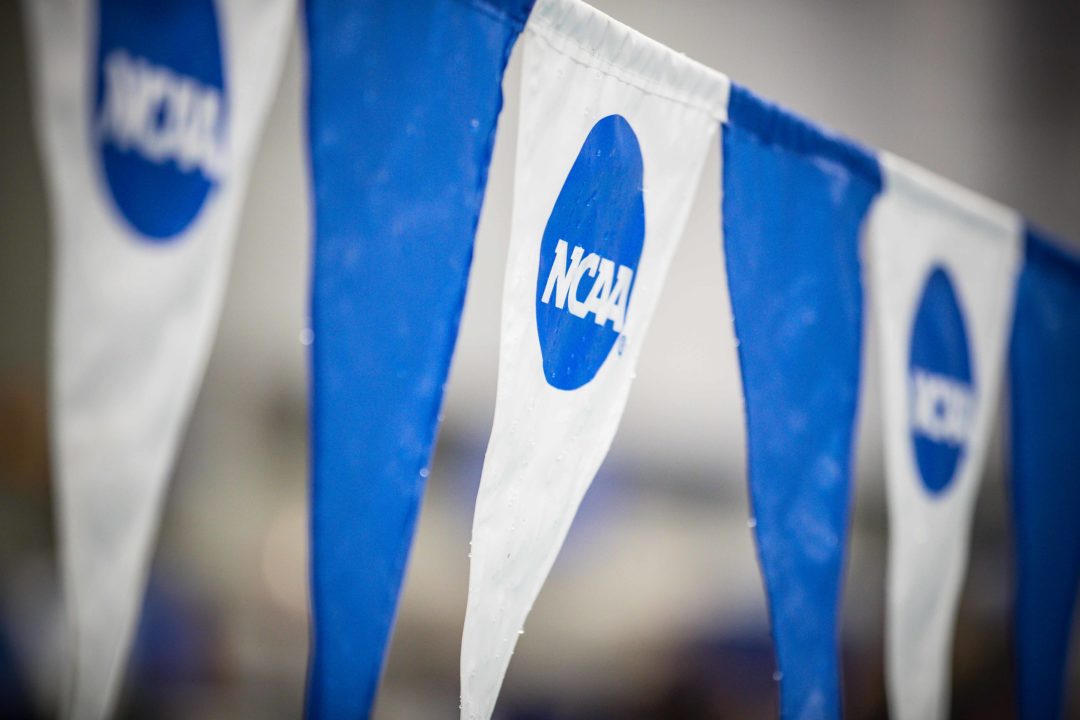After commissioners of the ‘Group of Five’ conferences asked the NCAA to temporarily relax its rules on how many sports Division I schools must sponsor, 22 more conferences have joined the push.
The Group of Five includes the American Athletic Conference, Mountain West Conference, Mid-American Conference, Sun Belt Conference and Conference-USA. Commissioners from those mid-major conferences asked the NCAA last week to issue a four-year relaxation of rules that require schools to sponsor at least 16 varsity sports to remain in Division I. The conferences say the coronavirus pandemic is creating economic hardships, and that relaxing the rules could give schools flexibility in decision-making for the short-term.
All reports so far mention mid-major conferences, meaning the Power-5 (ACC, Big Ten, Big 12, SEC, Pac-12) haven’t yet publicly weighed in. Conference commissioners have pushed back against the idea that the request is a direct pre-cursor to cutting sports.
“Nobody wants to cut sports,” said Mountain West commissioner Craig Thompson in an ESPN story. “There’s the conspiracy theorists who say, ‘Oh, this is the opportunity they’ve been looking for. They’ve been trying to cut that.’ I don’t believe that’s really the case.”
Critics, though, say an NCAA relaxation of the minimum sport requirements would allow schools to cut non-revenue sports to make ends meet.

How about cutting administrators, tenure, and raise the retirement age for faculty and staff. You have professors that are retired longer than they actually worked. Broken pension programs!
Swim programs may be in trouble with this… we don’t want more Clemsons, Marylands, or Syracuses.
Sadly many top tier swimming programs have total operating costs in excess of $1,000,000. Add a pro-forma of athletic department owned aquatic center upkeep, debt service of those facilities, staffing costs to run the facility (not all schools) and it leaps over $2 million for some Power 5 schools. If swimming would stop acting like the glutton it is and legislate self imposed restrictions and season modifications, perhaps it could be a viable NCAA sponsored sport. If not – It is dead in the water.
1. Fall or Spring competition sport only
2. Squad size limitations corresponding to scholarship % within Title IX guidelines – For example 18 women/12 men.
3. Reduce coaching staff numbers
4.… Read more »
Creative. And severe. My one overriding thought—At that reduced level, given debt service and rent of pool (large cost driver), I think schools might still just eliminate it entirely.
Thought provoking though.
VERY sadly agree most ADs will opt to eliminate the lead “At Risk” team – men’s swimming first and foremost. It is a huge red elephant.
If the NCAA really cares about the well being of ALL student athletes, they will not permit this to go through. That’s a really big “if”, though. We’ll see what happens.
What happens to your scholoarship offer if you program is cancelled ?
Generally, NLIs are cancelled. Current students with scholarships for the next season, they’re usually honored either for the next year, or until graduation. Varies by school.
This sucks. This is why I always tell college athletes to make the most of their opportunity to compete in college because its a privilege that can be taken away at any time.
What about just red shirting ALL NCAA sports for one year? Give all athletes a red shirt year and an opportunity to just train with their coaches and programs for the coming season. Maybe this takes the burden off of putting large groups together at competitions and games.
It would limit people from traveling and spreading virus by keeping a community more localized and the same people running into each other in theory. maybe and not encountering new people as often? I’m not expert but just thinking. Allow kids to get back to school and their training and routines day to day is what most kids would like ultimatly to be with their freinds and teammates again. If people… Read more »
What’s the point of that financially? The school would still have to cover facilities costs, coaching salaries, and scholarship dollars, which, as Braden pointed out above, are far and away the top 3 costs. At that point, may as well just continue having the sport in general.
There is a large counter effort at http://www.savecollegesports.com – #SaveOurSports